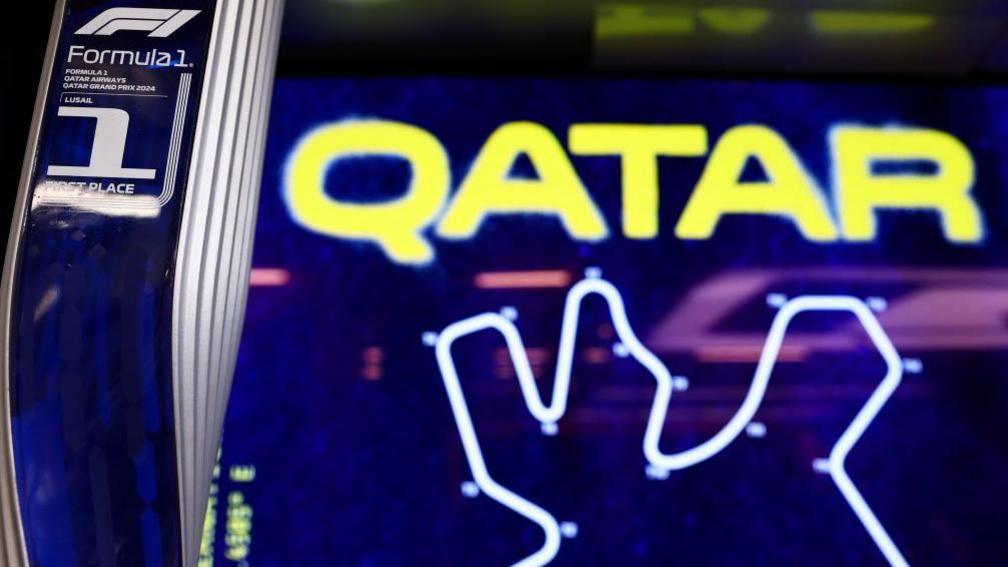Inside McLaren's season - the rules, values, incidents & relationships
- Published
- 10 Comments
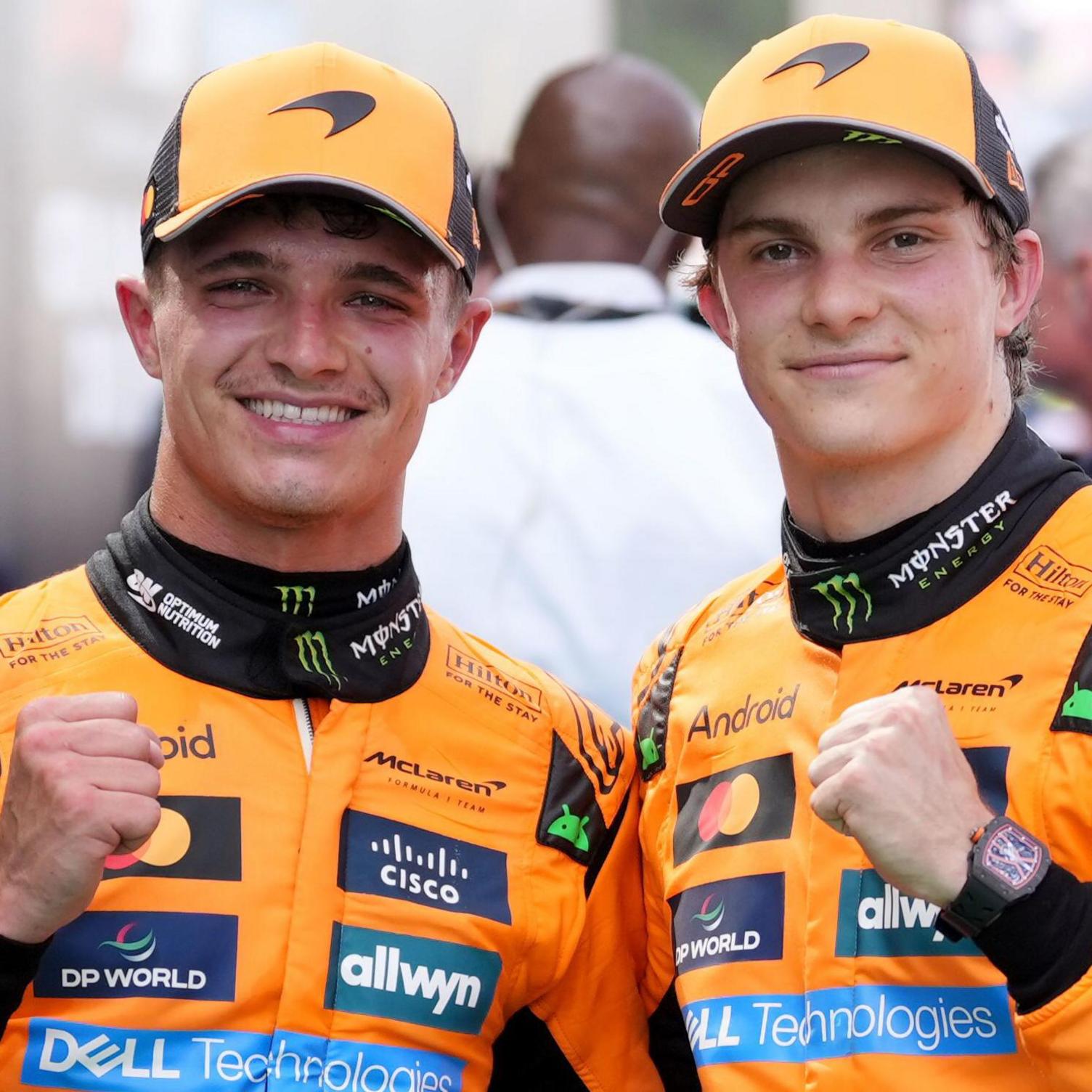
McLaren's greatest achievement this year is arguably not what they have accomplished on track. It's something they have managed off it.
Already constructors' champions, both Lando Norris and Oscar Piastri go into the final two races of the season with the chance of winning the drivers' title, Norris 24 points ahead of his team-mate and Red Bull's Max Verstappen.
Norris and Piastri have got here while remaining friendly.
McLaren's ability to keep two evenly matched drivers, of a similar age and career development, competing for their first title in the same team without falling out with each other is almost unprecedented in modern F1.
This sort of situation turns toxic far more often than not.
Not just, most infamously, Ayrton Senna and Alain Prost at McLaren in 1989. But also Nigel Mansell and Nelson Piquet at Williams in 1986-7, Lewis Hamilton and Fernando Alonso at McLaren in 2007, Sebastian Vettel and Mark Webber at Red Bull in 2010, and Hamilton and Nico Rosberg at Mercedes in 2014-16.
That list underlines just how hard it is to keep two intensely driven individuals in relative harmony with each other for an entire year, while fighting for the biggest prize in their sport in identical cars, out of the same garage.
It's hard enough to stop things getting noxious even when two title rivals are in different teams, such as in the tense relationship between Hamilton and Max Verstappen in 2021.
But add in the claustrophobia of the rivals being in the same engineering meetings and team briefings, balancing race strategies, and the intensity only increases.
Heading into this season, McLaren Racing chief executive officer Zak Brown and team principal Andrea Stella were well aware of the jeopardy, and consciously created a culture aimed at preventing the relationship between Norris and Piastri descending into disruptive conflict.
They have a carefully thought out internal philosophy, applied with intelligence and empathy to two drivers who have been convinced that keeping things harmonious is the best solution for all.
McLaren operate on a principle of fairness, trust and transparency, rooted in a basic principle that the drivers are allowed to race each other with equal treatment, with the proviso that they don't crash into each other.
"We are McLaren Racing," Stella says. "We are here to race.
"We want to give our two drivers the possibility to express their talent, achieve their aspirations, but this needs to be done within the principles and the approach that we have contributed to build together with our drivers. Fairness, sportsmanship, and respect for one another."
Stella says he "leans on the experience" he has gained - through 25 years in F1 with Ferrari and McLaren, and as a student of F1 - to construct what he considers the optimum way of running the team.
The underlying philosophy
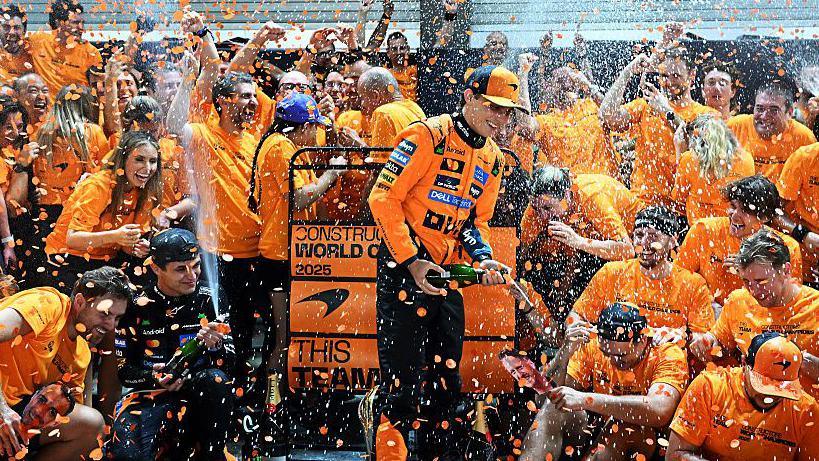
The McLaren team and drivers celebrated securing the constructors' championship at Singapore Grand Prix, with six races still remaining in the season
The starting point was that the only place the team cannot be fully united is in the quest for the drivers' championship. So don't ignore that. Put it first, and work from there.
"The way we operate now is the result of having learned so many lessons," Stella says. "We talk to the driver - straight talking.
"And if we get something wrong now, it needs to be, 'We didn't think about it.' But it can't be because we haven't talked openly and straight and honestly enough. Because that's the recipe to have a problem."
Why this approach? Because if issues are not discussed when they arise, they are likely to pop up the next time there is a moment of stress, when they are more likely to be expressed in a negative way, and so become harder to control.
Stella's achievement has been to get Norris and Piastri to buy into the idea that trusting the team to operate fairly is in their best interests, as well as those of the team, and consequently that the drivers should behave accordingly.
He has probably been aided in this by the fact that both have spent their entire careers at McLaren, are growing up with the team and, thanks to their relationships with the management, trust what the team are trying to create and achieve.
The drivers have reflected the culture Stella has constructed in repeatedly making two key points this year.
First, that open, fair competition between two evenly matched team-mates drives McLaren forward by consistently raising the bar of performance, and gives them a collective advantage over rivals who don't have that; and second, that they both want this to be their first title campaign with McLaren, not their only one.
Norris says having "two drivers who respect the team and are not selfish" is fundamental in this.
"We work very well as team-mates," he says. "We've helped the team in a very good way. There's been plenty of examples [in the past] of things not going as smoothly as they have done. And the team's then gone in a downward spiral. That's what we want to avoid as a team - that's our priority."
He adds: "I've always got on well with my team-mates since karting. I've always wanted to because it just makes my life more fun, more enjoyable, and that's also why I'm here - because I love what I do. So, the more I can do that, the better.
"But we still very much understand that we work for McLaren, we want the best for the team, we work very hard.
"As drivers always do, you try and maximise your own performance more than anything. But when we step out of the car, we can still have a joke, we still have laughs in our debriefs, and we still enjoy everything away from the track."
Off track, there is no tension between Norris and Piastri. They are friendly but not best friends.
What does that mean? Well, for example, if they are at an event, they will chat and eat with each other, quite happy in each other's company. But they probably won't be messaging when they've left.
Both have been firm in their conviction that they would rather race this way and risk being beaten to the title by a rival - as is possible with Verstappen this season - than have one prioritised by the team to the detriment of the other.
Piastri says: "On both sides of the garage, we want to win because we've been the best driver, the best team, including against the other car in the team.
"You always want to earn things on merit and you want to be able to beat everyone, including your team-mate.
"That gives Lando and I the best chance of our personal goals of trying to become Drivers' World Champion, while also achieving the main result for the team, which is the Constructors' Championship."
How it works in practice
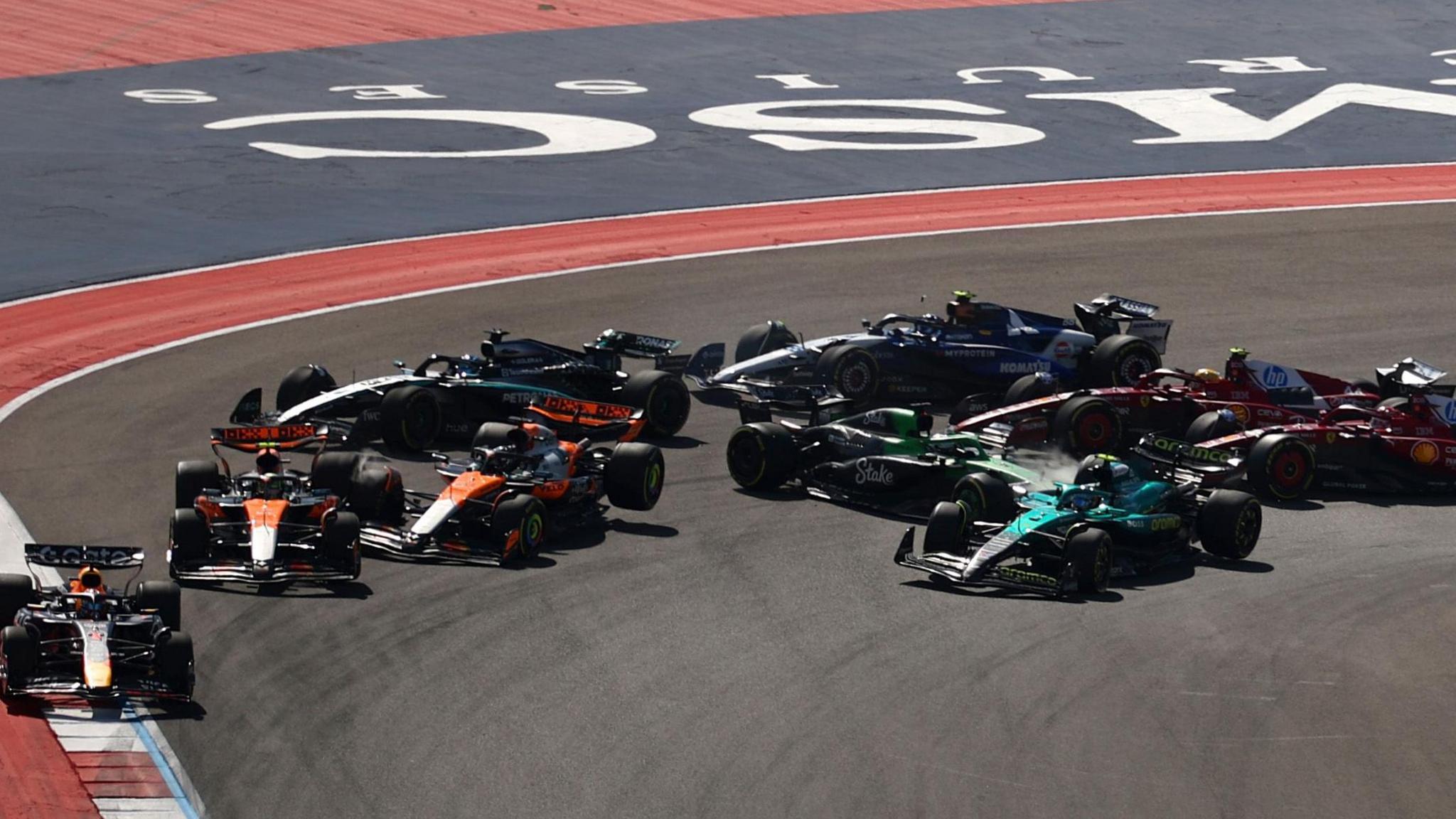
Oscar Piastri and Lando Norris collided at the start of the US Grand Prix sprint in October, putting both drivers out of the race. In June, they collided in Canada. Norris apologised for that incident, which forced his retirement from the grand prix.
A small group of senior figures at McLaren discuss with the drivers how they are going to approach their racing. They review what happened after each grand prix, and apply the lessons for the following race.
This happens in formal meetings, more informal conversations and ad hoc.
And they keep building on that process, over and over again.
This is all well and good in theory, but it's only sustainable in practice if everyone sticks to the principles when problems arise, as they inevitably do through an F1 season.
In 2025, there have been a number of races where equality and harmony have been tested - particularly Hungary, Italy, Singapore and Austin.
In Hungary, Norris was allowed to switch to a one-stop strategy after a bad start left him fifth, and ended up beating Piastri, whose two-stop from an early second place saw him spend the final laps trying and failing to pass Norris for the win.
In Italy, a decision to invert the natural pit-stop choreography after they had spent the race running in the order Norris-Piastri behind Verstappen was followed by a slow pit stop for Norris, and Piastri being asked to hand back the second place he had inherited.
In Singapore, Norris scrambled past Piastri into third place at the first series of corners, banging wheels in the process, leading to the Australian saying over the radio: "Are we cool with Lando just barging me out of the way?"
In Austin, an attempted cut-back move by Piastri on Norris at the first corner of the sprint race ended up in a collision that took both of them out.
Externally, these situations have either led to accusations that Norris was being favoured, or that McLaren were meddling too much, or both.
Internally, they were dealt with quietly, behind closed doors, and with the apparent result that everyone came away satisfied it had been resolved in the best possible way.
McLaren insiders have told BBC Sport that the driver meetings really are conducted in the way they are externally presented - issues are discussed openly, constructively and calmly, and a resolution is arrived at from which everyone can move on with equanimity, even if they had issues with what happened at the time.
If there has been any deviation from that in the drivers' minds privately, they have certainly not given any hint of it in public.
Piastri has rejected any suggestions that the team was not being fair, saying he's "very happy that there's no favouritism or bias".
And Norris says: "We still always have the right to question it. We're never going to just go around - because I think it's just a racing driver's mind - and be happy to accept whatever the team wants to do or what they think is correct.
"I understand that a lot of people have different opinions and think maybe other things are correct. But I still stand by the fact that Andrea and Oscar and all of us together are confident that our approach is better than what other people's are."
Brown says that any idea the team are siding with Norris is "nonsense".
He explains that when they let Norris switch to a one-stop in Hungary, "Andrea and I were like, 'This ain't gonna work.' But it was a free punt, and Lando drove brilliantly."
Monza, he says, was "just like what happened in Hungary the year before", when Norris let Piastri by for the win after a similar pit-lane arrangement.
"If the lead car is prepared to sacrifice their rights to the first call to help his team-mate, who's actually his number one competitor in the championship, that's great teamwork," Brown says.
"So I understand what it looks like from the outside, but it's not what's going on on the inside, and we're trying so hard to give them equal opportunity and let them race hard. I wish everyone recognised more of that.
"But I've definitely come to the conclusion there's too many fans with too many views that we've just got to be comfortable with how we're going racing inside McLaren, and that's what's most important to us."
Can this be sustained? That's impossible to know.
Norris and Piastri seem level-headed and humble. They are also both intensely ambitious.
Becoming world champion can change drivers. The more successful they become, the more demanding they get, especially in their requirements off-track.
McLaren have managed Norris and Piastri with sensitivity and effectiveness, but the challenges do not lessen just because that has been the case so far.
If anyone has an understanding of how hard it is to pull this off, it is Fernando Alonso.
The two-time champion has lived this dynamic in a title fight, and he's worked with both Stella and Brown - Stella at Ferrari then McLaren from 2010-18, and Brown when the American came on board at McLaren in 2016.
"The credit has to go for Andrea and Zak that they created a winning structure and car, but they were also able to manage the drivers for the benefit of the team," Alonso says.
"It is less exciting to watch and for media because there is no controversy in some of the wins, not yet.
"But instead of thinking that way, we should think how well Andrea and Zak are managing everything."
Related topics
- Published1 day ago
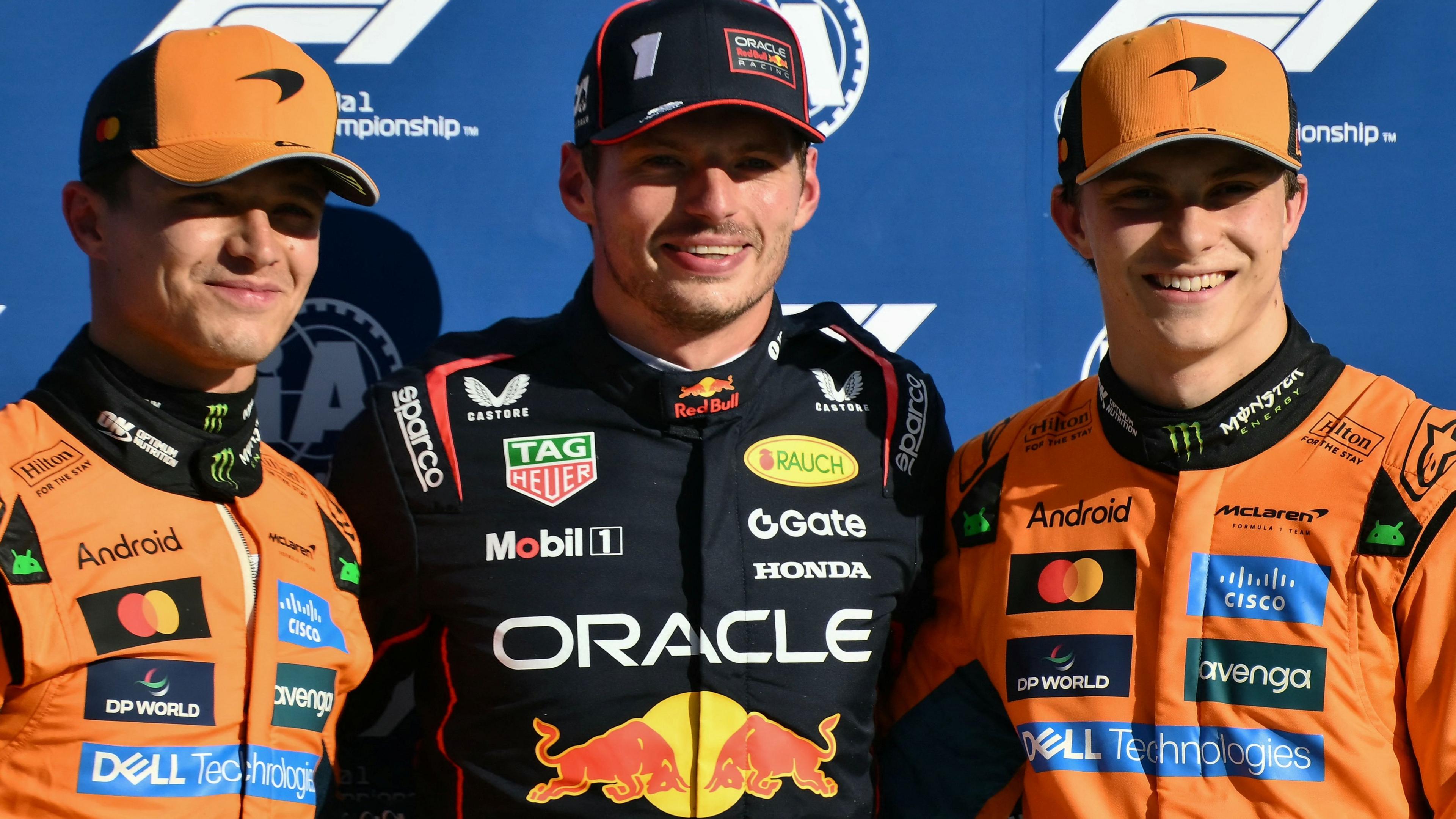
- Published2 days ago
